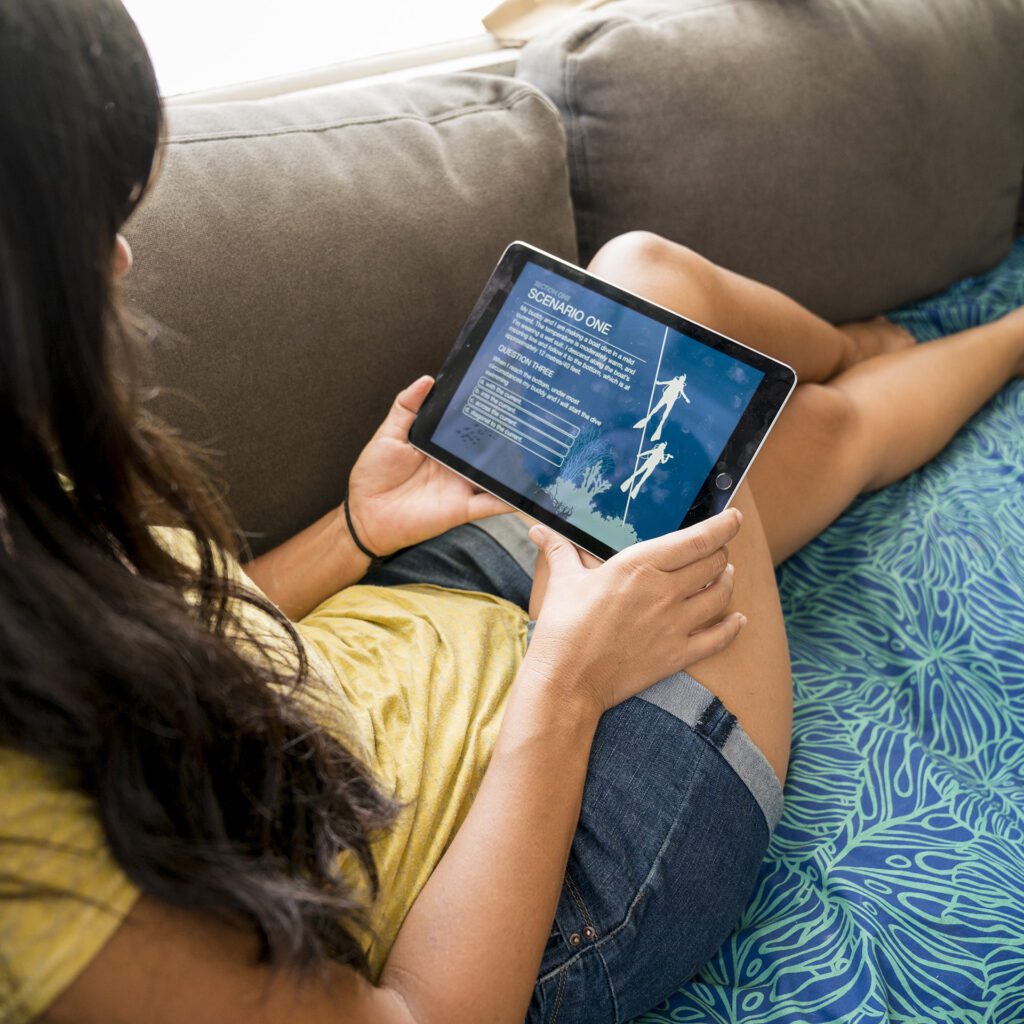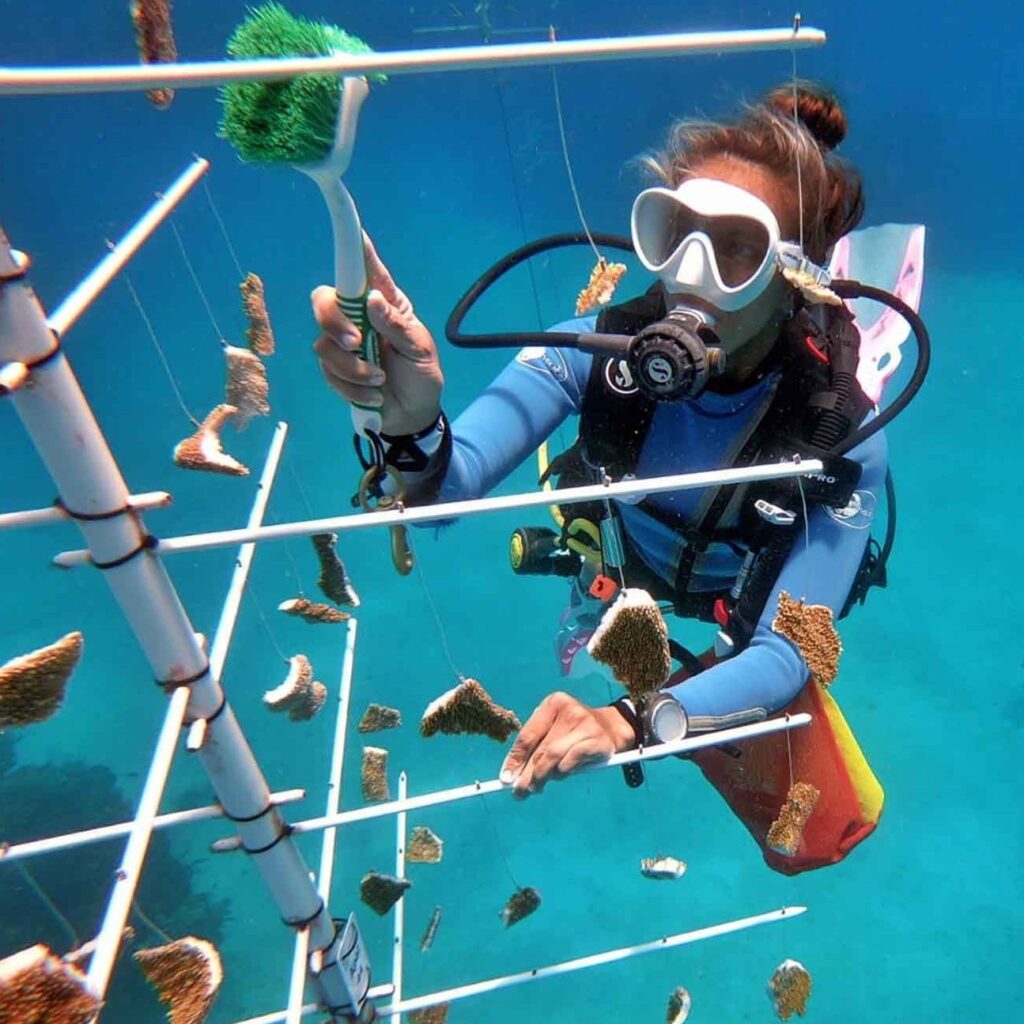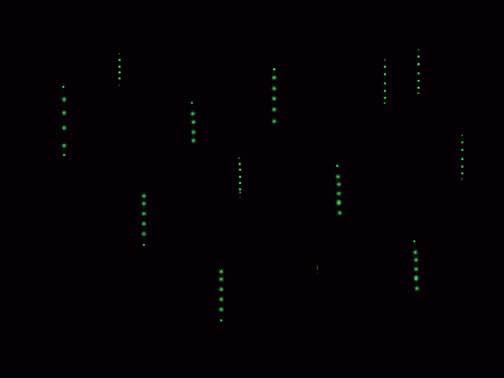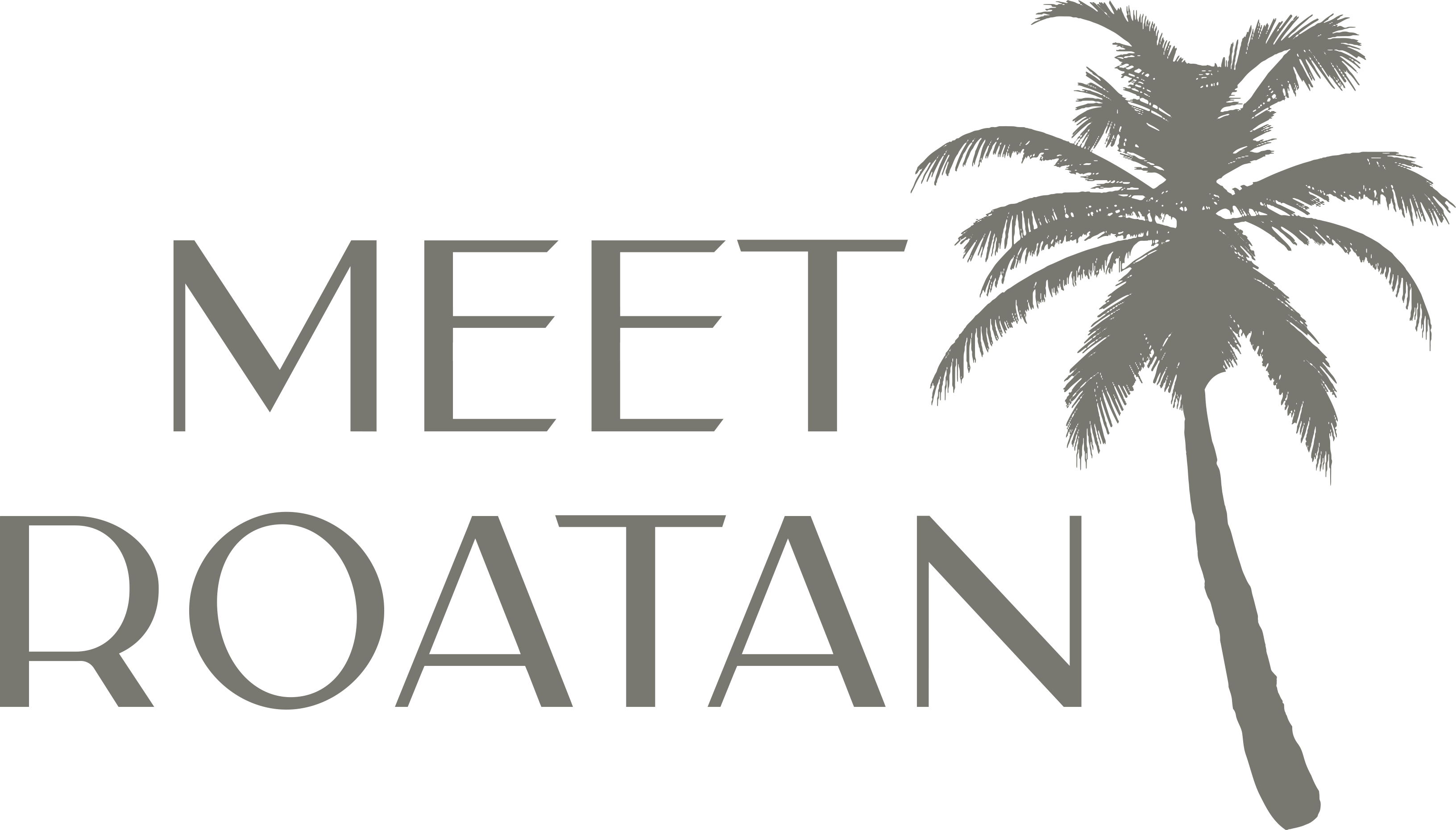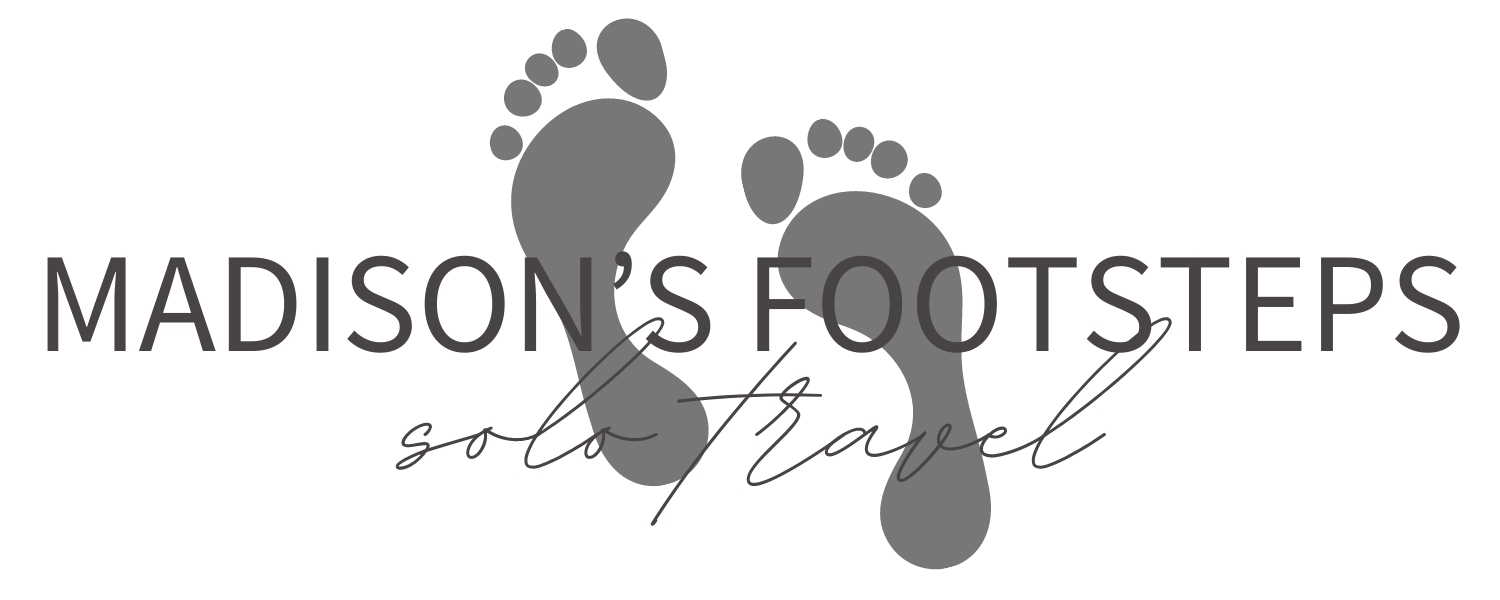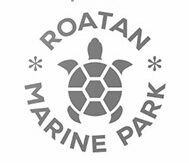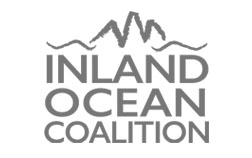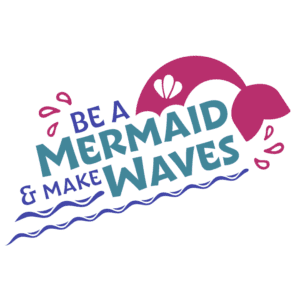June, 2021
To E-Learn or Not to E-Learn?
That is the question that a lot of people have when first considering achieving a PADI certification. But, like most things in life, there isn’t a one size fits all approach to SCUBA diving certifications. And that’s actually a good thing, because it allows you to personalize your diving education journey.
So how do you know if E-Learning is right for you?
Consider three things when deciding if you should opt for the PADI E-Learning vs. a full course at your dive center of choice. 1) your personal learning style, 2) your vacation length and 3) your budget.
But, before we dig into whether E-Learning is right for you, it’s probably best that you understand exactly what your options are! We’ll use the PADI Open Water course to highlight the differences.
The PADI Open Water Diver course includes three parts:
Knowledge Development, Confined Water Dives, and Open Water Dives. Knowledge Development covers the principles, concepts and terms you need to know for dive safety and enjoyment. During the Confined Water Dives, you learn and practice scuba skills in the shallow waters of our bay (other dive centers might use a pool). Then, to complete training, you will apply and demonstrate what you’ve learned through four Open Water Dives upon the beautiful Roatan reef.
Confined water skills might not be required for the certification program such as Advanced Open Water or Specialty Certifications.
There are two ways to approach the Knowledge Development portion of all PADI certification programs:
One is through PADI E-Learning which is an online training platform that includes a mix of written education and videos. The knowledge reviews, quizzes and final exam that you’d normally take on site at the dive center are administered for your completion online prior to show up to the dive center for your course. When you start the in-person part of the course with your dive center, they will administer a set of questions for you to answer known as a “Quick Review.” This allows the instructor to see where there might be knowledge gaps that they will then help fill through discussion with you.
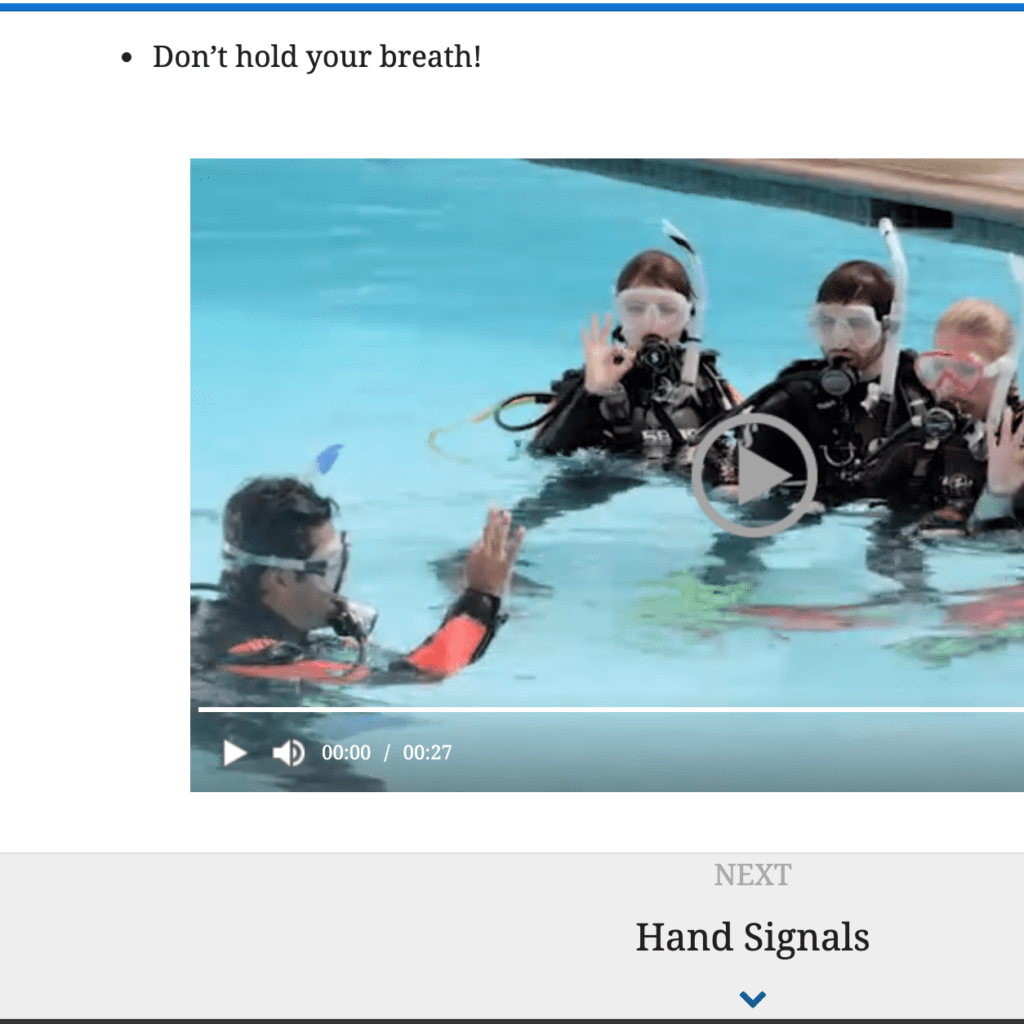
Screenshot of the multimedia PADI E-Learning platform
The second option is to take the “Full Course” at your dive center. With this option, you read a hard copy manual and answer the knowledge reviews in advance, and also must watch a series of videos. You then review the content of each of the five knowledge development sections with your instructor. With this option you’ll be able to ask more questions and hear anecdotes from your instructors experience that provide additional context to the theory. Quizzes are taken on site and reviewed with your instructor, as is the final exam.
With both options, you still must complete the confined and open water skills in person – there are just some things that can’t be done in a virtual world (yet!).
Is E-Learning right for your learning style?
Spoiler alert: Learning “styles” are a myth! Many of us have probably been told that we are either predominantly a visual, auditory and kinesthetic learners. And that when trying to process and learn new information, it should be taught to us in the style that’s our dominant learning style.
Cognitive research today has thoroughly debunked this myth. Plus, the PADI e-learning platform is an engaging mix of reading, informational images / graphics and videos hitting on both visual and auditory learning. Combine that with the kinesthetic confined and open water skills and you’ve used all senses to learn.
So if you think e-learning is not for you, you might just think again. Unless you just really prefer the experience of a “real” book vs. more screen time.
Will E-Learning give you more time to enjoy your vacation?
Absolutely. A typical full course will take 3 – 3.5 days to complete based upon your own rate of progress. E-Learning typically takes 2.5 – 3 days. That means more time for you to maximize your vacation – either moving on to fun diving after certification or freeing you up to incorporate other activities into your vacation.
Does E-Learning Cost More?
In short, yes. But as the saying goes, “time is money” and it’s just a matter of how much your time – especially your vacation time – is worth to you. Compare E-Learning prices here to decide whether it’s worth it to you.
Now that you know some of the differences between E-Learning and PADI’s traditional methods of instruction, it’s time to decide which is right for you. Still have questions? Don’t hesitate to reach out and ask!
The case for coral nurseries in Roatan
As you make your way for your safety stop at Seaquest, all of a sudden it comes into focus: An underwater forest of manmade tree-like contraptions. Little bits of coral dangle from these metal ‘trees’ like Christmas ornaments. What you’ve happened upon is the Roatan Marine Park’s Coral Restoration Nursery. The nursery is a super cool location to spot slender file fish, squid squads and even turtles and eagle rays – but it’s purpose is even cooler than that. The nursery is designed to ‘grow’ coral fragments that can then be outplanted onto the reef in order to increase coral coverage with more resilient coral species.
Wait – how do you grow coral?!
First it starts with the coral fragments. Broken bits of Elkhorn, Staghorn and Prolifera coral (which is a hybrid of the two) are recovered from the reef and then hung from the trees. Here they can avoid predators such as fireworms and snails while benefiting from increased sunlight and well-circulated water free flowing amongst the trees.
Much like a plant nursery, these smaller fragments are essentially nursed back to health (pun intended!), so that they can grow into larger, stronger fragments that will survive being outplanted back onto the reef. The more mature corals are then taken to the Roatan dive site Chiefs Quarters where they are “planted” using two-part epoxy. Many times they are positioned near existing coral colonies of the same species which indicate that the location is an area where the coral transplants will thrive.
Why do corals matter anyway?
Reefs cover only .2% of the ocean floor yet sustain 25% of marine life. They also contribute greatly to our lives providing recreation, billions of jobs and coastline protection. Not to mention, the joy, peace and exhilaration we experience when we get to connect underwater to the beauty of the reefs.
That’s a pretty big job for such a small population of coral. Yet, this all-too-important and already limited ecosystem is under attack from warming sea temps, diseases such as Stony Coral Tissue Loss Disease damage from ships of all kinds, and destruction from construction such as port dredging.
As coral coverage diminishes, so will the home to thousands of species of fish, invertebrates, marine mammals and more. So will our ability to spark joy from exploring the reef while scuba diving. And so will the protection from storms and erosion, as well as the foundation for billions of jobs worldwide.
In short, a world without corals is not one we’re excited about living in or raising our children to have to struggle with.
What’s the coral situation in Roatan?
The MesoAmerican Barrier Reef in Roatan is under the same catastrophic stressors as reefs around the world. To help offset the loss of coral colonies seen here on the island, The Roatan Marine Park has developed a nursery with 20 trees. Since the nursery’s installation in 2019, over 300 coral fragments have been outplanted. The next steps: continuing to expand the program, while also monitoring the outplanted coral for future growth and spawning (to ensure corals are self-propagating).
So now you’re saying ‘Cool, I want to help plant coral!’
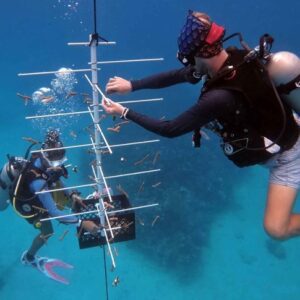
Sun Diver team members Nick Griffiths and Ana Meza attach coral fragments to a tree.
You’re in luck. Divers have an opportunity to become volunteers through the Coral Restoration Ambassador program. As a Coral Restoration Program Certified Dive Center, we can certify you so that you
can perform basic tree maintenance, help repair trees that have been damaged from storms and surge, and even assist with outplanting and data monitoring. There are two certification levels and the course can be completed in just a couple days. Learn more about how to become a certified RMP Coral Ambassador.
If you’re not on the island and won’t be anytime soon: what are you waiting for? Book your ticket!! But you can also support form afar by donating to RMP’s program. Donations help fund nursery operations, permits to keep the program running, and ongoing analysis to improve future program decision.
Okay, so what is the String of Pearls?!
So you just finished your first Roatan night dive and experienced the globally rare “string of pearls” phenomena. The only thoughts that go through your mind are “have I entered the Matrix?” or “Who spiked my water?”.
Check out this cool TED Talk by bioluminescence specialist and Ocean Research and Conservation Association founder Edith Widder.
What you have seen can only be described as mind-altering and, possibly, life changing.
Imagine yourself in complete darkness. Each flurry of movement sends “sparks” through the water. The light gives you the sense of racing through the universe surrounded by a galaxy of stars. You are already amazed at the experience – THEN the magic happens – your eyes begin to focus on the strings of sparkling lines of brilliant green lights that flash in concert throughout the water.
So what is it that you’re exactly seeing?
The legend of the “String of Pearls” has a many homegrown explanations. The most common is simply that no one really knows what they are. While that isn’t completely true, sometimes the marvel of the experience is simply more romantic without knowing the details.
The truth of the matter is that there is real romance involved.
The real story behind the “String of Pearls” starts with a microscopic crustaceans
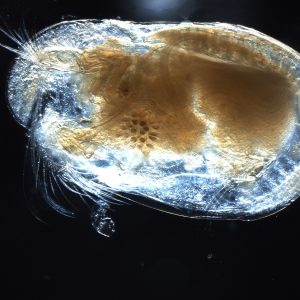
Ostracod
called Ostracods. These tiny creatures emerge from the depth about an hour after sunset to begin their bioluminescent courting ritual which consists of males excreting strings of “vomit” blobs of bioluminescent mucus – all in the name of love… And the Ostracod chicks dig it!
Each of the strings produce an intricate series of vertically progressing flashes to attract non-luminescent females of the same species. The displays typically consist of nine to 13 pulses, three bright, longer pulses followed by six to ten dimmer, quick pulses. The length of each train of displays is typically 50 to 70 centimeters with each pulse lasting a second or less and ranging from millimeters to centimeters apart.
Divers who experience this amazing sight often struggle to describe what they just experienced but are aware that what they witnessed was uniquely Roatan.
Now you’re asking yourself… how can I see the “String of Pearls”?
Every night dive will be a thrilling adventure but take a glance at the moon stages. If you happen to be on the island when there is a new moon (ie. No moon), your chances just increased dramatically. Check out more on our night diving at Sun Divers Roatan here.


